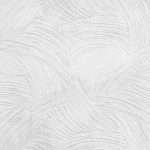Drys and dries are terms used to describe the process of removing moisture from a material or substance. Both terms are used interchangeably, but there is a subtle difference between them.
Drys refer to the process of removing moisture from a material or substance by air-drying, which means to remove moisture from the material by allowing air to pass over it. This can be done naturally or with the assistance of a fan or a dehumidifier. This process can take anywhere from a few hours to a few days, depending on the material and the amount of moisture present.
Dries, on the other hand, refer to the process of removing moisture from a material or substance by heat-drying, which involves using a heater or an oven to evaporate the moisture from the material. This process is much faster than air-drying and can take anywhere from minutes to hours, depending on the material and the amount of moisture present.
When deciding which process to use for drying a material, it is important to consider the type of material and the amount of moisture present. If the material is delicate or easily damaged, air-drying may be the best option. If the material is robust and moisture-resistant, then heat-drying may be the best option.
In conclusion, both “drys” and “dries” refer to the process of removing moisture from a material or substance. The difference between the two terms is that “drys” refer to the process of air-drying, while “dries” refer to the process of heat-drying.Drys and dries are terms used to describe the process of removing moisture from a material or substance. Both terms are used interchangeably, but there is a subtle difference between them.
Drys refer to the process of removing moisture from a material or substance by air-drying, which means to remove moisture from the material by allowing air to pass over it. This can be done naturally or with the assistance of a fan or a dehumidifier. This process can take anywhere from a few hours to a few days, depending on the material and the amount of moisture present.
Dries, on the other hand, refer to the process of removing moisture from a material or substance by heat-drying, which involves using a heater or an oven to evaporate the moisture from the material. This process is much faster than air-drying and can take anywhere from minutes to hours, depending on the material and the amount of moisture present.
When deciding which process to use for drying a material, it is important to consider the type of material and the amount of moisture present. If the material is delicate or easily damaged, air-drying may be the best option. If the material is robust and moisture-resistant, then heat-drying may be the best option.
In conclusion, both “drys” and “dries” refer to the process of removing moisture from a material or substance. The difference between the two terms is that “drys” refer to the process of air-drying, while “dries” refer to the process of heat-drying.Drys and dries are terms used to describe the process of removing moisture from a material or substance. Both terms are used interchangeably, but there is a subtle difference between them.
Drys refer to the process of removing moisture from a material or substance by air-drying, which means to remove moisture from the material by allowing air to pass over it. This can be done naturally or with the assistance of a fan or a dehumidifier. This process can take anywhere from a few hours to a few days, depending on the material and the amount of moisture present.
Dries, on the other hand, refer to the process of removing moisture from a material or substance by heat-drying, which involves using a heater or an oven to evaporate the moisture from the material. This process is much faster than air-drying and can take anywhere from minutes to hours, depending on the material and the amount of moisture present.
When deciding which process to use for drying a material, it is important to consider the type of material and the amount of moisture present. If the material is delicate or easily damaged, air-drying may be the best option. If the material is robust and moisture-resistant, then heat-drying may be the best option.
In conclusion, both “drys” and “dries” refer to the process of removing moisture from a material or substance. The difference between the two terms is that “drys” refer to the process of air-drying, while “dries” refer to the process of heat-drying.Drys and dries are terms used to describe the process of removing moisture from a material or substance. Both terms are used interchangeably, but there is a subtle difference between them.
Drys refer to the process of removing moisture from a material or substance by air-drying, which means to remove moisture from the material by allowing air to pass over it. This can be done naturally or with the assistance of a fan or a dehumidifier. This process can take anywhere from a few hours to a few days, depending on the material and the amount of moisture present.
Dries, on the other hand, refer to the process of removing moisture from a material or substance by heat-drying, which involves using a heater or an oven to evaporate the moisture from the material. This process is much faster than air-drying and can take anywhere from minutes to hours, depending on the material and the amount of moisture present.
When deciding which process to use for drying a material, it is important to consider the type of material and the amount of moisture present. If the material is delicate or easily damaged, air-drying may be the best option. If the material is robust and moisture-resistant, then heat-drying may be the best option.
In conclusion, both “drys” and “dries” refer to the process of removing moisture from a material or substance. The difference between the two terms is that “drys” refer to the process of air-drying, while “dries” refer to the process of heat-drying.


